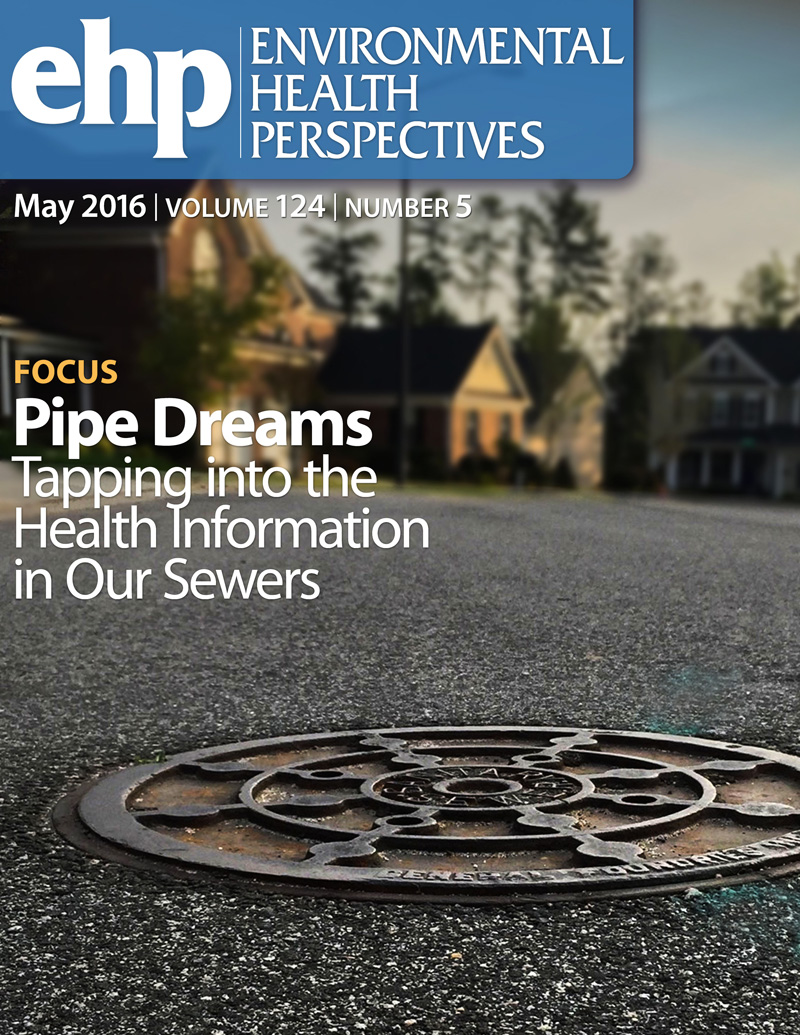Outdoor exposure to artificial light at night and breast cancer risk: A case-control study nested in the E3N-Generations Cohort.
IF 10.1
1区 环境科学与生态学
Q1 ENVIRONMENTAL SCIENCES
引用次数: 0
Abstract
BACKGROUND Exposure to light at night (LAN), particularly blue light, is suspected to disrupt circadian rhythm, inhibit melatonin production, and eventually increase the risk of breast cancer. OBJECTIVES We assessed the association between exposure to outdoor LAN and breast cancer risk in the E3N-Générations cohort, a large population-based cohort study of French women followed-up from 1990 to 2011. METHODS We conducted a nested case-control study in the cohort, including 5222 incident breast cancer cases and 5222 matched controls. Outdoor LAN exposure at residential addresses was assessed using radiance-calibrated satellite images from the Defense Meteorological Satellite Program (DMSP). Logistic regression models were used to obtain odds ratios (OR) and 95% confidence intervals (CI), adjusting for socio-demographic, reproductive, hormonal, and lifestyle-related factors, as well as exposure to air pollutants (NO2, PM2.5) evaluated from land use regression and chemistry transport models, and proximity to greenspaces estimated from the Normalized Difference Vegetation Index (NDVI) in a buffer of 300 m. RESULTS Before adjustment for environmental covariates, the ORs associated for LAN exposure increased monotonically from the first to the fourth quartile. This increasing trend was less pronounced after adjustment for air pollutants (NO2 and PM2.5) and NDVI, but the fully adjusted OR per interquartile-range of LAN exposure (261 nW/cm2/sr) remained slightly elevated (ORIQR 1.11; 95% CI: 1.02, 1.20). The adjusted ORs were slightly more elevated in postmenopausal (ORIQR 1.10; 95% CI 1.02-1.18) than in pre-menopausal women, and in women living in urban areas with low greenness. CONCLUSION The weak positive associations observed in this study that persist after adjustment for environmental covariates, support the hypothesis that outdoor LAN may increase breast cancer risk. Our results, suggesting that urban greenness could mitigate the role of LAN exposure in breast cancer risk, should be investigated further. Future studies on cancer risk in relation to outdoor LAN should assess exposure to indoor sources, including electronic devices, and characterize the light spectrum, particularly the blue light. https://doi.org/10.1289/EHP15105.夜间室外暴露于人造光与乳腺癌风险:一项在e3n世代队列中嵌套的病例对照研究。
夜间暴露在光线下(LAN),特别是蓝光,被怀疑会扰乱昼夜节律,抑制褪黑激素的产生,最终增加患乳腺癌的风险。目的:我们在e3n - gsamn队列中评估室外LAN暴露与乳腺癌风险之间的关系,这是一项基于人群的大型法国女性队列研究,随访时间为1990年至2011年。方法采用巢式病例-对照研究,纳入5222例乳腺癌病例和5222例匹配对照。使用来自国防气象卫星计划(DMSP)的辐射校准卫星图像评估住宅地址的室外局域网暴露。利用Logistic回归模型获得优势比(OR)和95%置信区间(CI),调整了社会人口统计学、生殖、激素和生活方式相关因素,以及土地利用回归和化学运输模型评估的空气污染物暴露(NO2、PM2.5),以及300 m缓冲区内归一化植被差异指数(NDVI)估计的绿地接近度。结果在调整环境协变量之前,与局域网暴露相关的or从第一到第四个四分位数单调增加。在调整了空气污染物(NO2和PM2.5)和NDVI后,这种增加趋势不那么明显,但完全调整后的局域网络暴露的每四分位数范围的OR (261 nW/cm2/sr)仍然略有升高(ORIQR 1.11;95% ci: 1.02, 1.20)。绝经后调整后的or略高(ORIQR 1.10;(95% CI 1.02-1.18)比绝经前妇女和生活在绿化程度低的城市地区的妇女要高。结论本研究中观察到的弱正相关在调整环境协变量后仍然存在,支持户外LAN可能增加乳腺癌风险的假设。我们的研究结果表明,城市绿化可以减轻LAN暴露在乳腺癌风险中的作用,应该进一步研究。未来关于与室外局域网有关的癌症风险的研究应评估暴露于室内光源,包括电子设备,并确定光谱,特别是蓝光的特征。https://doi.org/10.1289/EHP15105。
本文章由计算机程序翻译,如有差异,请以英文原文为准。
求助全文
约1分钟内获得全文
求助全文
来源期刊

Environmental Health Perspectives
环境科学-公共卫生、环境卫生与职业卫生
CiteScore
14.40
自引率
2.90%
发文量
388
审稿时长
6 months
期刊介绍:
Environmental Health Perspectives (EHP) is a monthly peer-reviewed journal supported by the National Institute of Environmental Health Sciences, part of the National Institutes of Health under the U.S. Department of Health and Human Services. Its mission is to facilitate discussions on the connections between the environment and human health by publishing top-notch research and news. EHP ranks third in Public, Environmental, and Occupational Health, fourth in Toxicology, and fifth in Environmental Sciences.
 求助内容:
求助内容: 应助结果提醒方式:
应助结果提醒方式:


